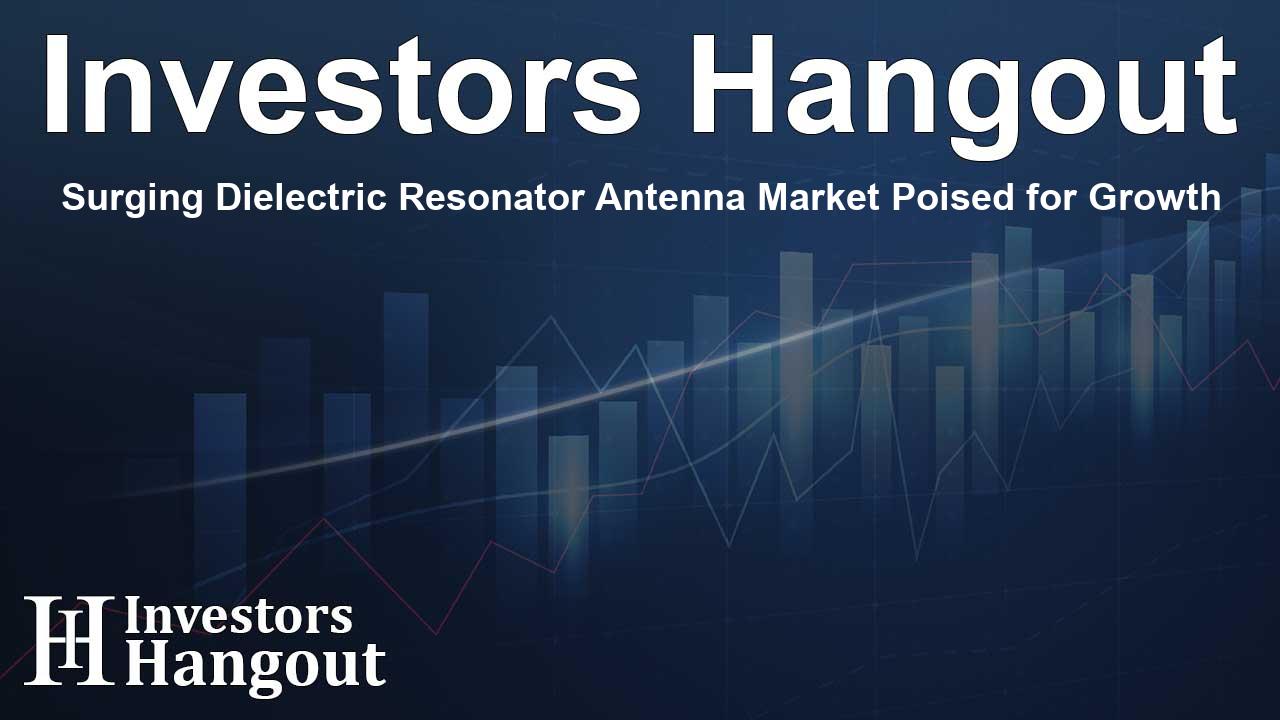Surging Dielectric Resonator Antenna Market Poised for Growth

Analyzing Market Trends in Dielectric Resonator Antennae
The Dielectric Resonator Antenna (DRA) market is on the brink of substantial growth, forecasted to escalate from a valuation of USD 7.09 billion to an impressive USD 20.34 billion by 2032. This upward trajectory is largely propelled by the surging demand for advanced telecommunications and military applications.
Key Market Drivers
One of the main factors contributing to the expansion of the DRA market is the rapid development of 5G networks. Currently, over 230 commercial 5G networks operate globally, and the demand shows no sign of slowing down. The average mobile data consumption has soared to 15 GB per person per month, with video streaming constituting about 80% of this data traffic. Such driving forces emphasize the necessity for advanced antenna technology capable of providing high-speed, low-latency communication.
The Role of DRAs in Telecommunications
With the increasing number of users relying on mobile internet services, companies are striving to enhance user experience through improved connectivity. DRAs play a crucial role in this landscape, ensuring communications remain seamless and efficient. Furthermore, as telecommunications technology continues to evolve, DRAs provide a compact, efficient solution that is able to meet rigorous industry standards.
Military Applications and the Demand for DRAs
The military sector is witnessing significant implementation of DRAs due to their high efficiency and secure operation in high-frequency communication. These antennas are employed in critical military communications, surveillance, and radar systems. Major defense contractors are incorporating DRAs into their systems to enhance communication reliability and security on the battlefield.
Market Segmentation Based on Type and Application
The DRA market is segmented into different categories based on type and application. Rectangular DRAs dominate the segment, holding over 56% market share as of their versatility and performance in high-frequency operations. Military applications lead the charge, constituting over 57% of the total market, highlighting the reliance on DRAs for secure communications.
Regional Market Insights
In 2023, North America was the leading region in the DRA market, driven by established telecommunications infrastructure and substantial investments in next-generation technologies. Both the United States and Canada are at the forefront of adopting DRA technology to enhance communication capabilities.
Growth in the Asia-Pacific Region
The Asia-Pacific market is expected to be a crucial growth area. Countries like China, Japan, and South Korea are significantly investing in 5G infrastructure, stimulating demand for DRAs. Additionally, the development of military technologies in the region further accelerates the need for these antennas in both commercial and defense communication networks.
Recent Developments Influencing DRA Technology
Several recent product launches and advancements have transformed the DRA market landscape. Leading companies are innovating and integrating advanced technologies for better operational efficiency, optimizing designs to meet the evolving needs of sectors relying on high-frequency communications.
Future Applications and End Uses of DRAs
Looking ahead, the integration of DRAs with emerging technologies like 5G and prospects of 6G indicate a robust future for these antennas. The military will further depend on DRAs to secure communications and advanced functionalities. In consumer electronics, DRAs are set to miniaturize devices while maintaining efficiency.
Frequently Asked Questions
What is the projected size of the DRA market by 2032?
The Dielectric Resonator Antenna market is expected to reach USD 20.34 billion by 2032.
What is driving the demand for Dielectric Resonator Antennas?
The primary drivers are the rapid expansion of 5G networks and increased military applications requiring secure communication.
Which segment currently leads the DRA market?
The military segment is leading the DRA market, accounting for over 57% of the share.
How does DRA technology benefit telecommunications?
DRAs enhance signal strength and connectivity, ensuring efficient communication in high-demand environments.
What innovations are emerging in the DRA sector?
Recent innovations include product integrations requiring advanced electronic components and the development of high-efficiency designs for both military and commercial uses.
About The Author
Contact Dylan Bailey privately here. Or send an email with ATTN: Dylan Bailey as the subject to contact@investorshangout.com.
About Investors Hangout
Investors Hangout is a leading online stock forum for financial discussion and learning, offering a wide range of free tools and resources. It draws in traders of all levels, who exchange market knowledge, investigate trading tactics, and keep an eye on industry developments in real time. Featuring financial articles, stock message boards, quotes, charts, company profiles, and live news updates. Through cooperative learning and a wealth of informational resources, it helps users from novices creating their first portfolios to experts honing their techniques. Join Investors Hangout today: https://investorshangout.com/
The content of this article is based on factual, publicly available information and does not represent legal, financial, or investment advice. Investors Hangout does not offer financial advice, and the author is not a licensed financial advisor. Consult a qualified advisor before making any financial or investment decisions based on this article. This article should not be considered advice to purchase, sell, or hold any securities or other investments. If any of the material provided here is inaccurate, please contact us for corrections.
